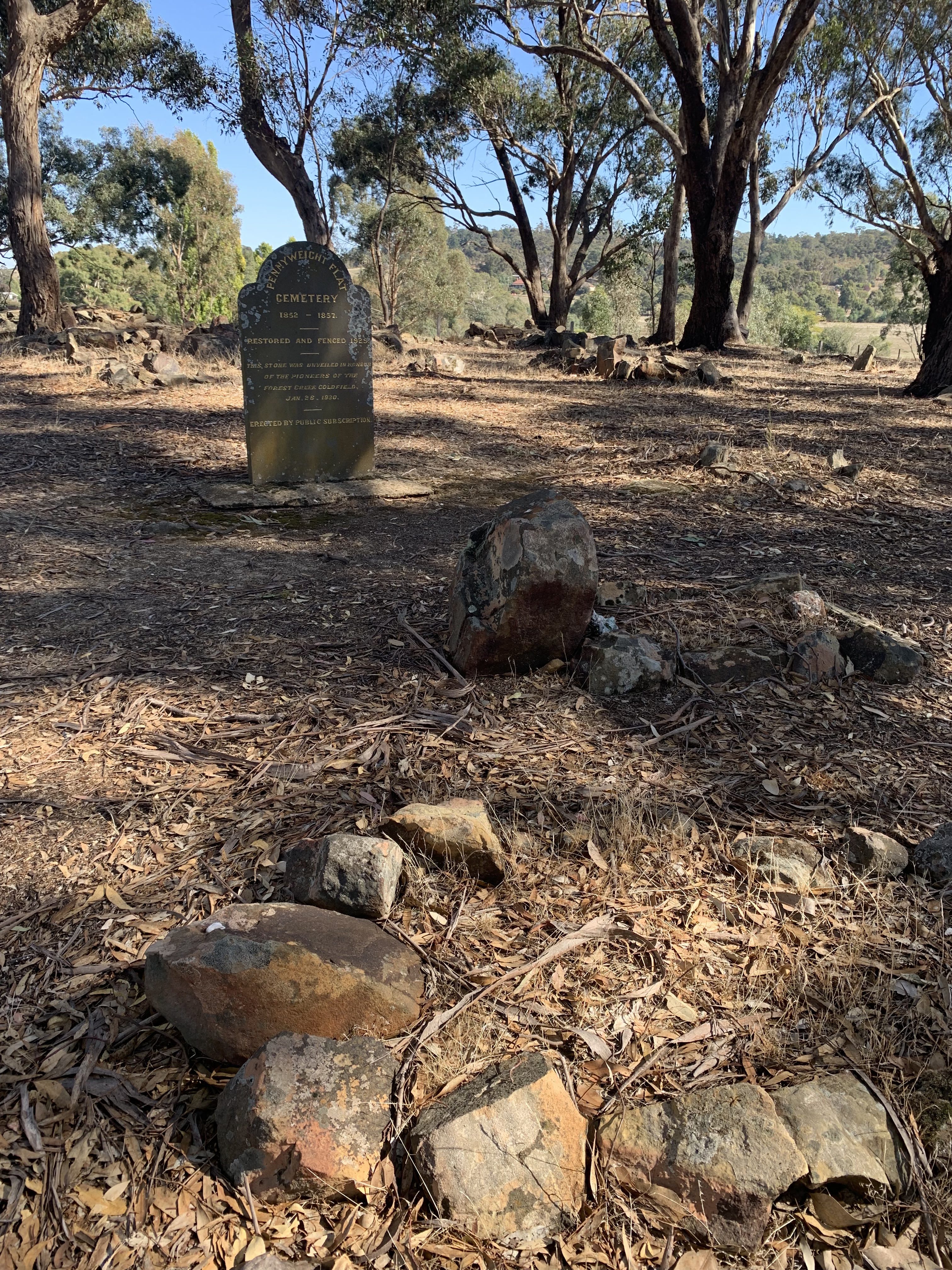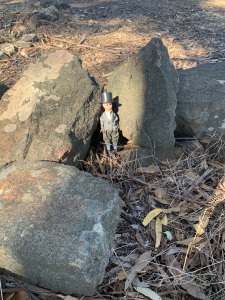Life on the goldfields was particularly harsh on children. They were often used as a source of labour and could earn small amounts of money for errands. Their young immune systems were still developing and children were highly susceptible to diseases that sometimes ran through mining communities. However, even the young were drawn to the lure of gold and could also be found panning along the rivers.
In 1852, on a barren piece of land that was of no use to gold miners or fossickers, a cemetery for the deceased children of the Castlemaine goldfields was set aside. Located within the Castlemaine Diggings National Heritage Park is Pennyweight Flat Children’s Cemetery. A pennyweight is a very small measure of gold.




The graveyard is little more than a bee-stung patch of ground, small swellings rising up here and there where the earth’s surface was long ago prickled by rough shovels. Some of the mounds have their perimeters acknowledged by rows of stones, no more sophisticated than those you might set up around a campfire; others are marked only by a single jutting rock, or nothing at all. Looking out from Pennyweight Flat Children’s Cemetery, the Australian scenery is beautiful.
Surrounded by grey box gums in a tranquil setting, the Children’s Cemetery tells a silent story about some realities of the goldfields during the 1850s. Many families travelled to the Castlemaine diggings in the early 1850s as word spread about alluvial (surface) gold to be found.
The Pennyweight Flat Children’s Cemetery in Moonlight Flat is a heartbreaking result of the awful living conditions in the diggings during the gold rush of the 1850s. Around 200 shallow graves, mostly children and babies, are scattered amongst the trees.
Aside from the associated danger of children wandering off and getting lost, the poor and inadequate drainage of the early settlements caused much discomfort not only for everyone’s olfactory nerves but on the community’s health problems. A lack of clean drinking water along with accidents and diseases were the main causes of death for children living on the goldfields. The first recorded deaths on the Mount Alexander Diggings were of two small children, who perished of dysentery in November 1851.
Many graves are simply marked by stone arrangements, but there are a few which have headstones with readable engravings. There have also been memorial plaques added to some graves in recent years.

Pennyweight is one of my favorite places to visit with my dogs. For me it is the equivalent of going to church and spending time with the divine. It is also a popular destination for families. No doubt inspired by stories such as the one about Nannie, children leave small toys on many of the graves. I have considered taking children’s books out to this beautifully tranquil place, sitting and reading to the children. Meanwhile I am sure they have enjoyed the visits of my dogs.
Today I took my Macabre Tarot with me and was delighted when the Magician fell out of the pack, demanding to be featured.

